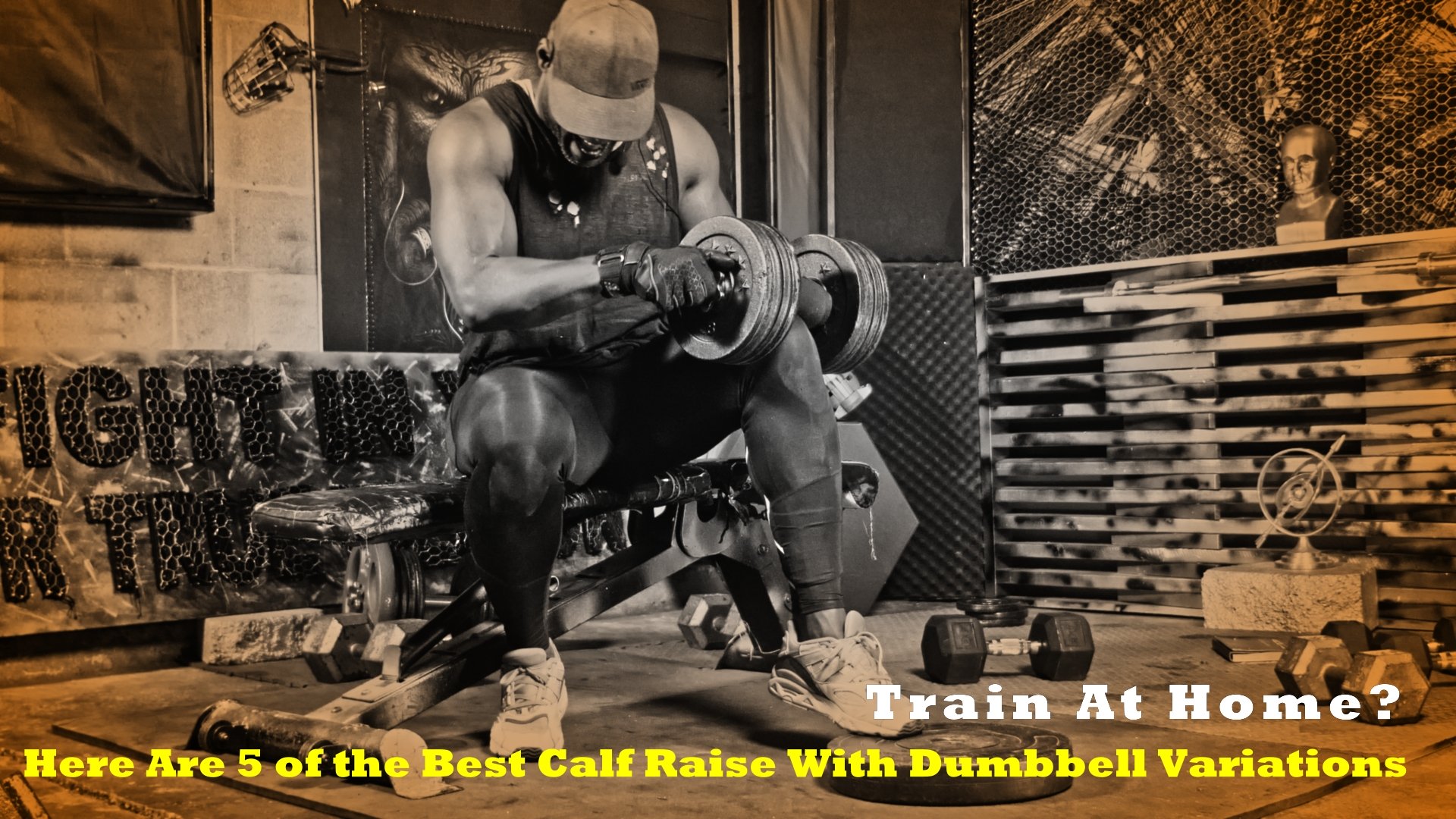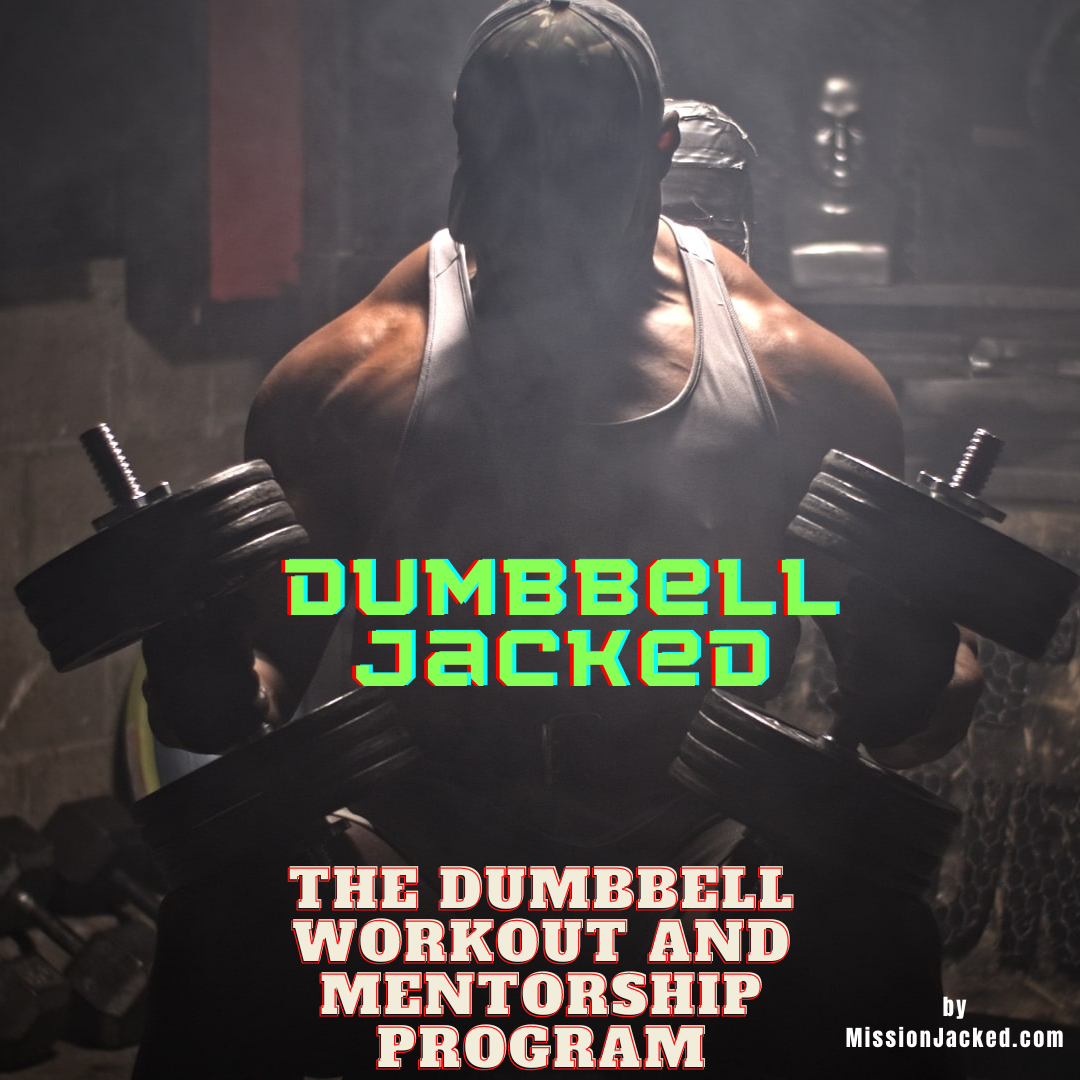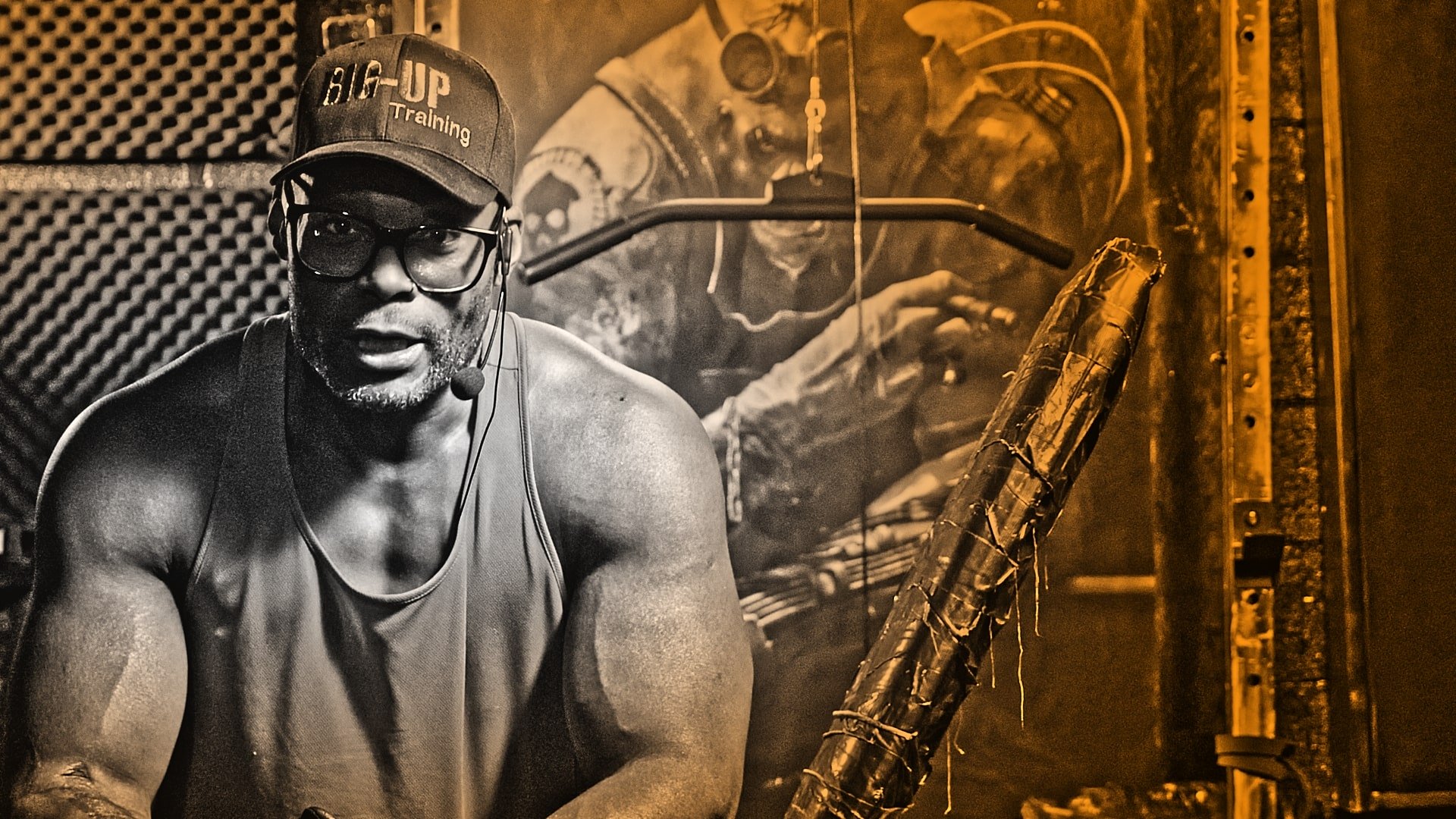Mission Jacked.com
5 Calf Raise with
Dumbbell Variations
For Home Lifters
Calf Raise With Dumbbell Table Of Contents:
4: Exercise 1 - Single Leg Standing Dumbbell Calf Raises
5: Exercise 2 - Dumbbell Calf Raise Seated
6: Exercise 3 - Bent Knee Calf Raise
7: Exercise 4 - Bent Knee Calf Raise Version 2
8: Exercise 5 - Standing Dumbbell Calf Raise with Resistance Band
9: How many reps should I do for calf raises?
Lower Body Article Under The Spotlight
Muscle Building Hamstring Dumbbell Workout
Split Squat Your Way To Better Looking Legs
Dumbbell Lunges - Build Muscle In Your Lower Body With These Awesome Variations
Dumbbell Squats: 4 Unusual Variations To Beef Up Your Quads & Strengthen Your Knees
Choosing Urethane and Rubber Dumbbells For Your Home Gym
How do I get bigger calves at home? Try these calf raise with dumbbell variations. Even if you train at home with minimal equipment, you can still grow decent-sized calves.
Many lifters who train at home believe they can't build calves unless they have a Calf Raise or Leg Press Machine. Some struggle with building calf muscles because of a lack of knowledge. Also, there are a few lifters who don't train calves and either wear long pants all year-round or have excuses why they don't hit anything below the belt.
Don’t be the home lifter full of excuses for having little to no calf muscles, but be the complete home-built physique that puts in the work from head to toe.
While genetics play a role in how big you can grow your calves, everyone can improve this area, even if all they have are dumbbells. This can be done by using different variations of seated and standing calf raises with dumbbells.
I’m Psymon H., architect of the Mission Jacked movement, creator of the BIG-UP Home Training System, and the man making his name from improving physiques and growing natural muscle with minimal equipment.
In this article, I will show you how to build your calves with Standing Dumbbell Calf Raises and four different dumbbell calf raise variations.
Exercise List
1: Single Leg Standing Calf Raises With Dumbbells
2: Dumbbell Calf Raise Seated
3: Bent Knee Calf Raise
4: Bent Knee Calf Raise Version 2
5: Standing Dumbbell Calf Raise With Resistance Band
Calf Muscles
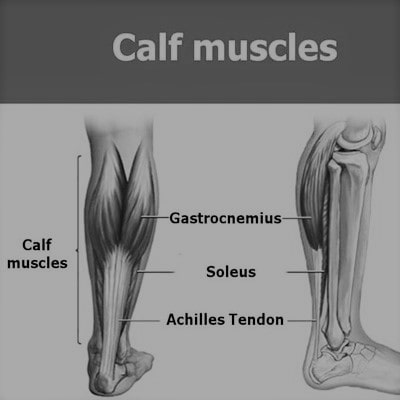
First, let's take a quick look inside the calves so we can understand the muscles that make up this area, and the benefit of calf raises.
The calf is made up of two primary muscles; first, we have the well-known Gastrocnemius muscle which makes up the outer portion of the calf and gives it its definition.
From two heads attached to the femur that runs to the Achilles tendon, the Gastrocnemius job is to flex the knee and foot and is the main plantar flexor of the ankle joint (plantar flexion movement is when in the top of your foot points away from your leg such as in the top position of the Standing Calf Raises With Dumbbells.)
We also have the lesser-known Soleus muscle which lies behind the Gastrocnemius and makes up the volume of the calf. The Soleus is designed to stop the body from falling forwards at the ankle when standing. The best way to work the Soleus is in the bent-knee position.
Dumbbell Clean and Press Your Way To A Stronger and Fitter Physique!
The Benefit of Calf Raises:
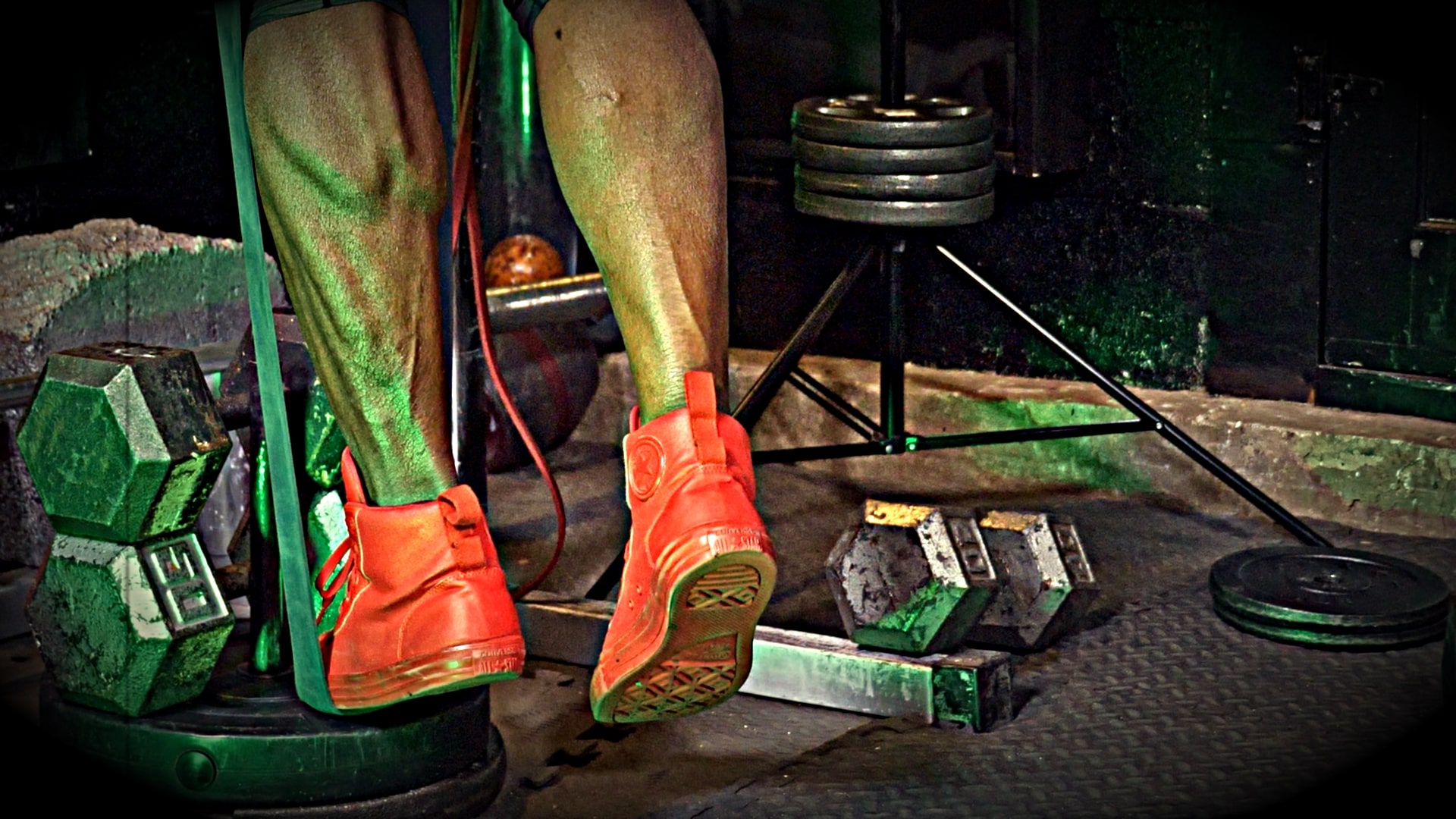
1: Develops strength and explosive power.
2: Improves ankle stability and balance.
3: It helps stretch the plantar muscles of the foot.
4: Protect your Achilles tendon.
5: Calf raises are good for your joints.
Now let’s go ahead and get to know each of the five exercises. Each movement comes with cues and pictures so you can be up and running with each exercise movement on your very next lower body workout.
Dumbbells:
Get Your Tools of The Trade Below
Choosing The Best Dumbbell Set With Rack 5 50 lb. Combo
Get Jacked With This Home Dumbbell Workout For Men
Exercise 1: Single Leg Standing Dumbbell Calf Raises:
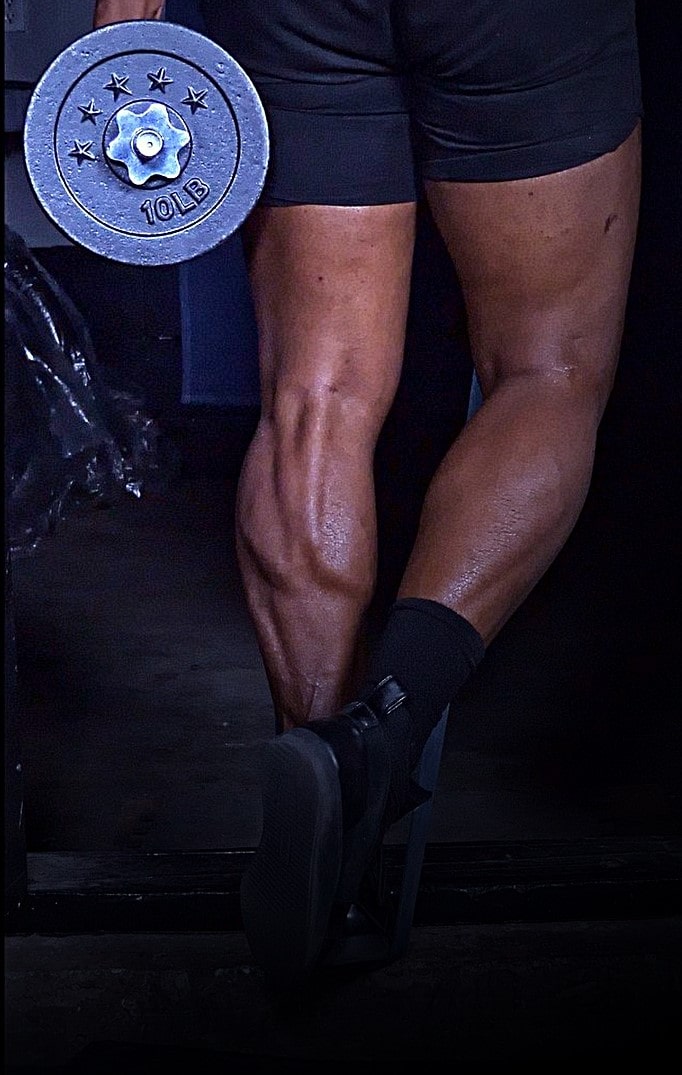 Single Leg Standing Dumbbell Calf Raises
Single Leg Standing Dumbbell Calf RaisesWhen training calves at home with minimal equipment, there's always calf raise with dumbbell exercises you can do. We kick off with probably the most popular calf raise of them all, and that's Single-Leg Standing Dumbbell Calf Raises, aka One Leg Dumbbell Calf Raise.
This is an exercise that can get diluted very quickly the faster we motor through each repetition. The Achilles tendon is a tough band of fibrous tissue that connects the calf muscles to the heel bone. As this is a notoriously strong area, it can take much of the stress during a set of Standing Calf Raises with Dumbbells.
For this reason, I advise you to slow down on the lowering portion of the movement to allow the calf muscles more involvement. When done correctly, standing dumbbell Calf raises focus more on the Gastrocnemius because you plantar flex your foot when your knee is locked.
Items Needed: A block or low platform, something to hold onto such as a rack or doorframe, and one dumbbell.
The Setup: Place your block in front of your support and make sure that it won’t tip over the moment you place weight on it. Add a heavy dumbbell to one end to keep the block in place if needed.
Cue 1: Let’s work the left calf first by placing a dumbbell in your left hand with a neutral grip and resting it against your left thigh for support.
Cue 2: Stand on the edge of your block with the ball of your left foot, and either have your right foot hanging behind or actively rest it against your left calf.
Cue 3: Rise as high as you can on your toes, ensuring to place most of the pressure on your big toe.
Cue 4: Hold the top position for two seconds.
Cue 5: Take 3-4 seconds to lower your heel past the level of the block and allow yourself to feel the stretch in your calf muscle. Repeat for the desired amount of repetitions and replicate the movement on the other leg.
The 3 Best 25 lb Dumbbells On The Market
Calf Raise with Dumbbell Variation 1: Dumbbell Calf Raise Seated
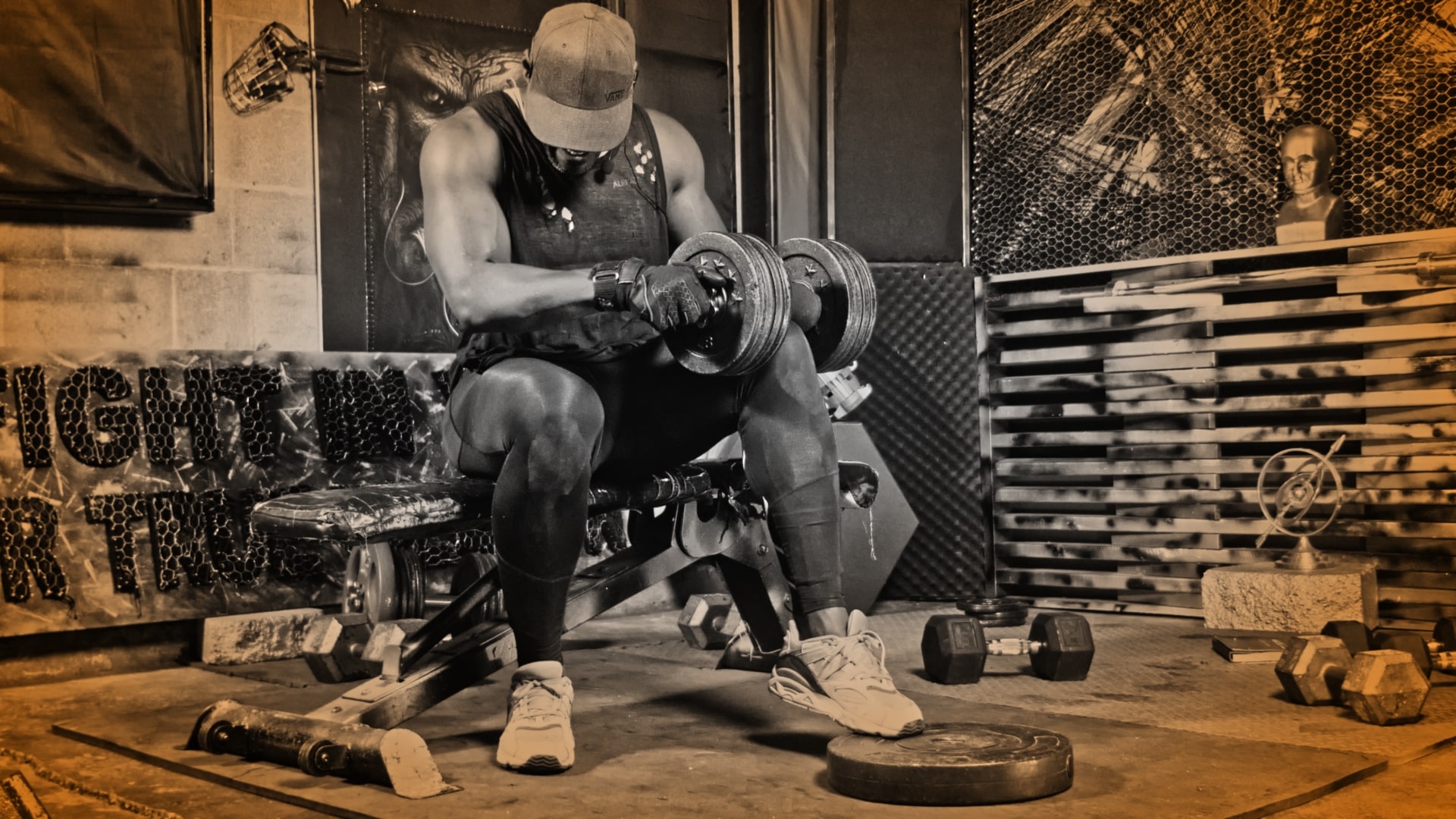 Dumbbell Calf Raise Seated
Dumbbell Calf Raise SeatedThis movement is great for involving the Soleus muscle as you plantar flex your foot when your knee is bent. Although I like this exercise, when you start to use heavier dumbbells, it's best to wrap a pad or towel around the handle to make the exercise a little more comfortable.
Pro-Tip: on all single-leg calf raises, always start with your weakest side first. This gives you a chance to work on any imbalances and strength differences.
Items Needed: One block, a flat bench, and one dumbbell
The Setup: Place your block in front of your flat bench with enough room for you to have your knee bent at a right angle.
Cue 1: Sit with the ball of your left foot resting on the edge of the block and place the handle of the dumbbell on the edge of your knee. Use your hands to keep the dumbbell from moving and rolling off your knee.
Cue 2: Rise as high as you can on your toes, ensuring that most of the pressure goes through your big toe.
Cue 3: Hold the top position for two seconds, and then take 3-4 seconds to lower your heel past the level of the block allowing you to feel the stretch in your calf muscle. Repeat for the desired amount of repetitions and replicate the movement on the other leg.
dumbbell press push
Calf
Raise with Dumbbell Variation 2:
Bent Knee Calf Raise
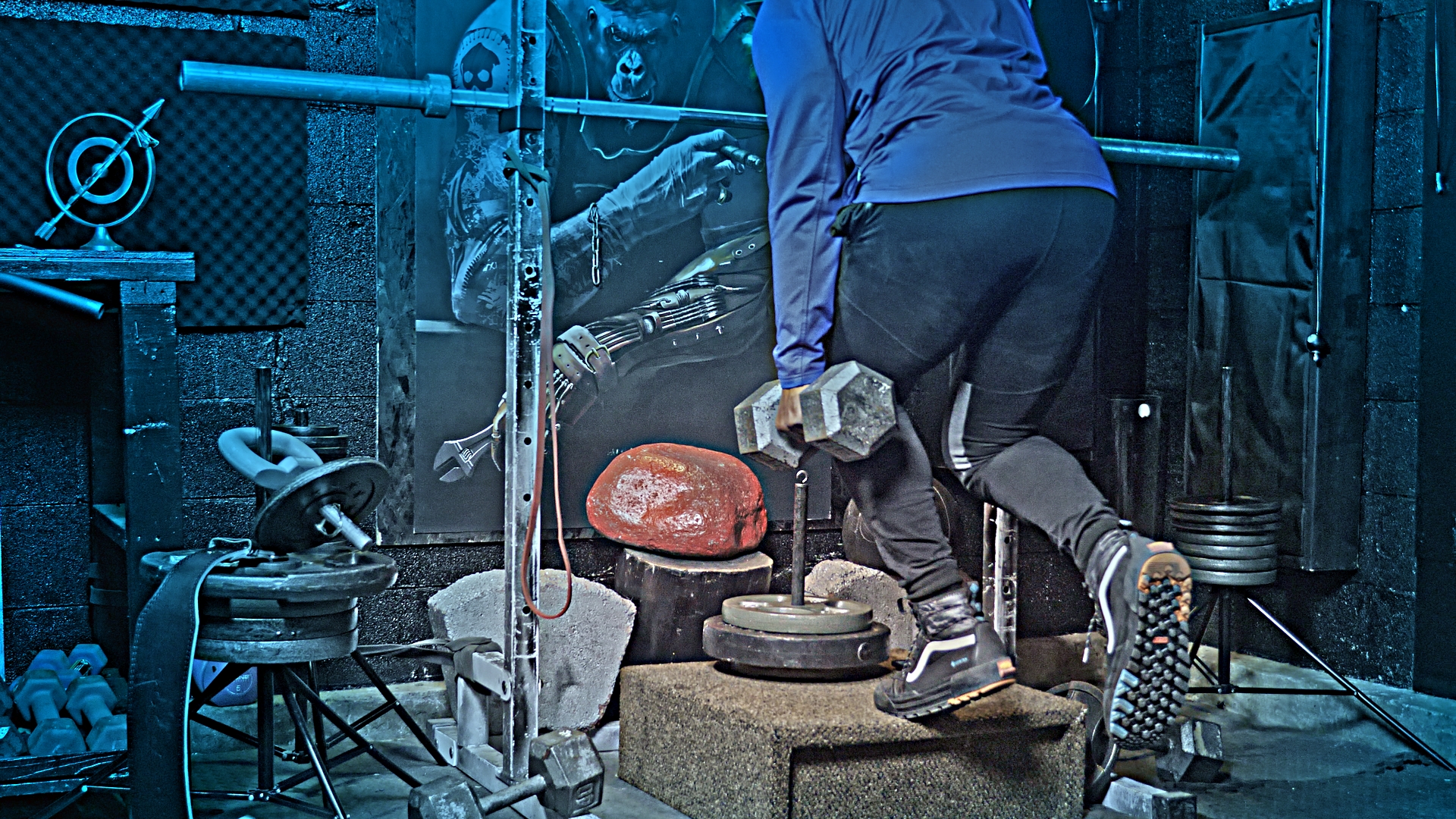 Bent Knee Calf Raise - Start Position
Bent Knee Calf Raise - Start Position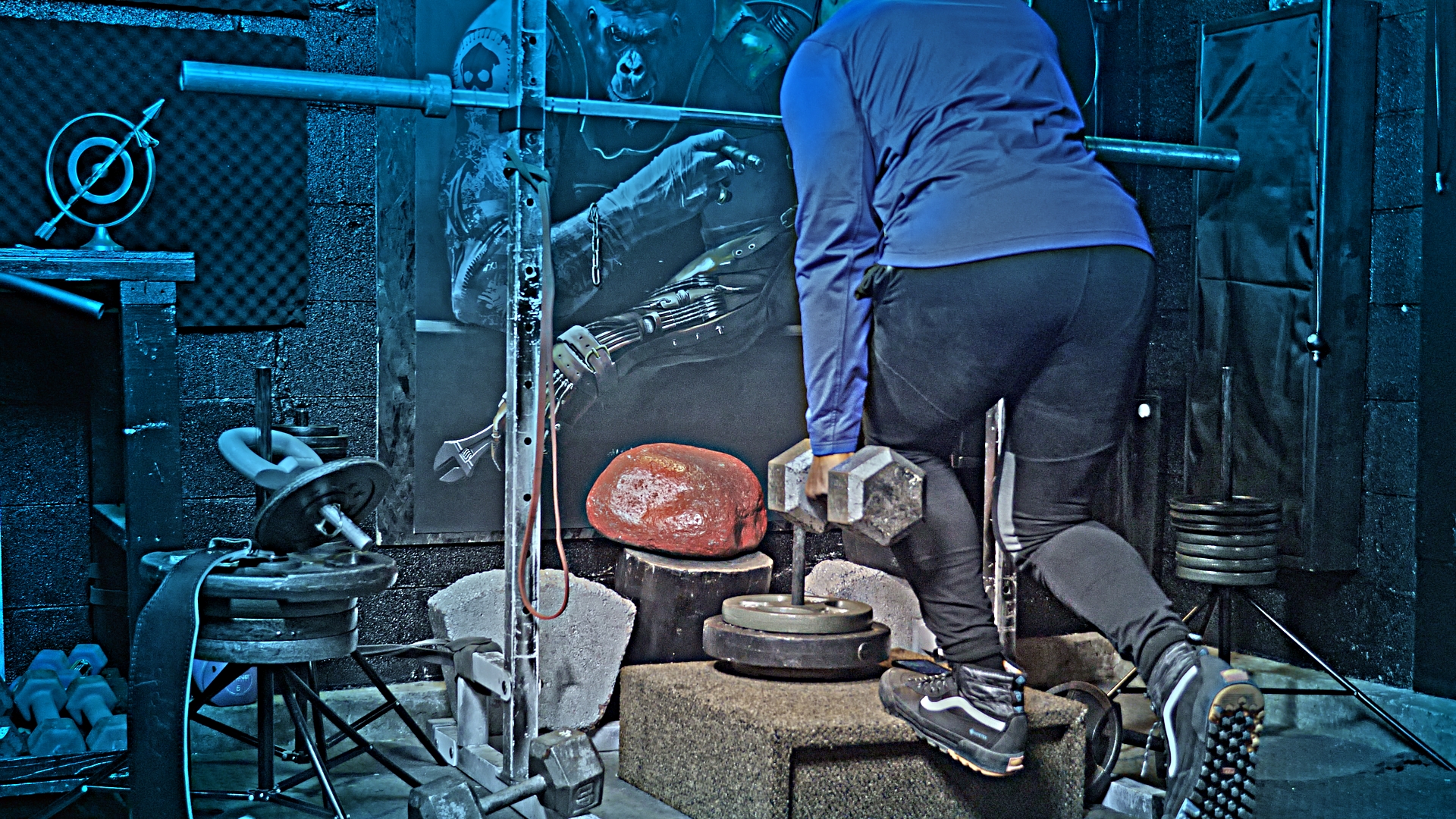
Here's another Soleus stand-out exercise worth putting in your lower body dumbbell workouts. The Bent Knee Calf Raise is an alternative to the seated dumbbell raise and an exercise that gives you options especially if you don't have super heavy dumbbells to be able to perform low repetition seated calf raises.
Items Needed: One Platform, one dumbbell, and something you can use as support such as a rack.
Setup: Place a platform in front of or to the side of a rack and lay some weight on the far end so it does not tip over when we start the exercise.
Cue 1: Stand with the ball of one foot on the edge of the platform and bend at the knee. Hold the dumbbell on the same side and use your free hand to support you and help you stay in position.
Cue 2: With your knee bent, rise on your toes as far as you can go and hold for a second or two.
Cue 3: Slowly lower down so that your heel is below the level of the platform. Be sure to maintain a bent knee throughout the movement.
Calf
Raise with Dumbbell Variation 4:
Bent Knee Calf Raise Version 2
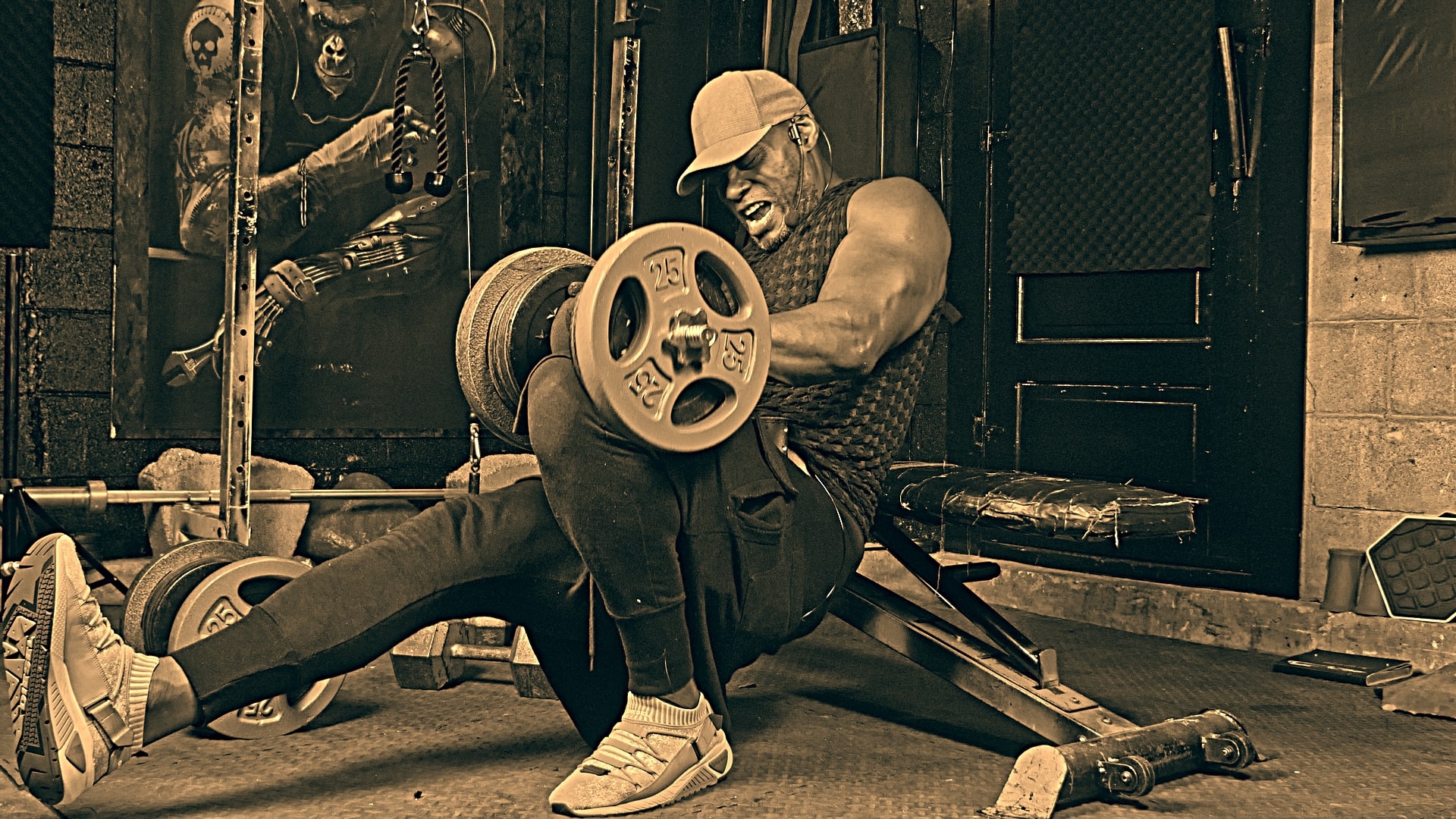 Bent Knee Calf Raise Version 2
Bent Knee Calf Raise Version 2If you want to get deep inside the calf muscle to the point you almost cramp up during an exercise, try a set of the Bent Knee Calf Raise Version 2. To say that this calf movement is intense from top to bottom would be an understatement.
Items Needed: One dumbbell and a flat bench.
Cue 1: Begin by sitting on the edge of a flat bench and placing the dumbbell on the knee of your working leg. Use the hand on the working side to support the dumbbell and keep it in place. At this point, your knee should be at a right angle to your ankle.
Cue 2: Keeping your working leg in place, slide yourself off the bench so that you are in a hip thrust position. Use the elbow on your non-working side to support you before stretching out your non-working leg and lifting it off the floor.
Cue 3: Start by having the foot of your working leg flat on the floor, and then begin to lift your heel as far as you can.
Cue 4: Briefly hold at the top of the movement before lowering your foot to the floor. Repeat for the desired amount of repetitions before swapping legs.
Calf
Raise with Dumbbell Variation 5:
Standing Dumbbell Calf Raise with Resistance
Band
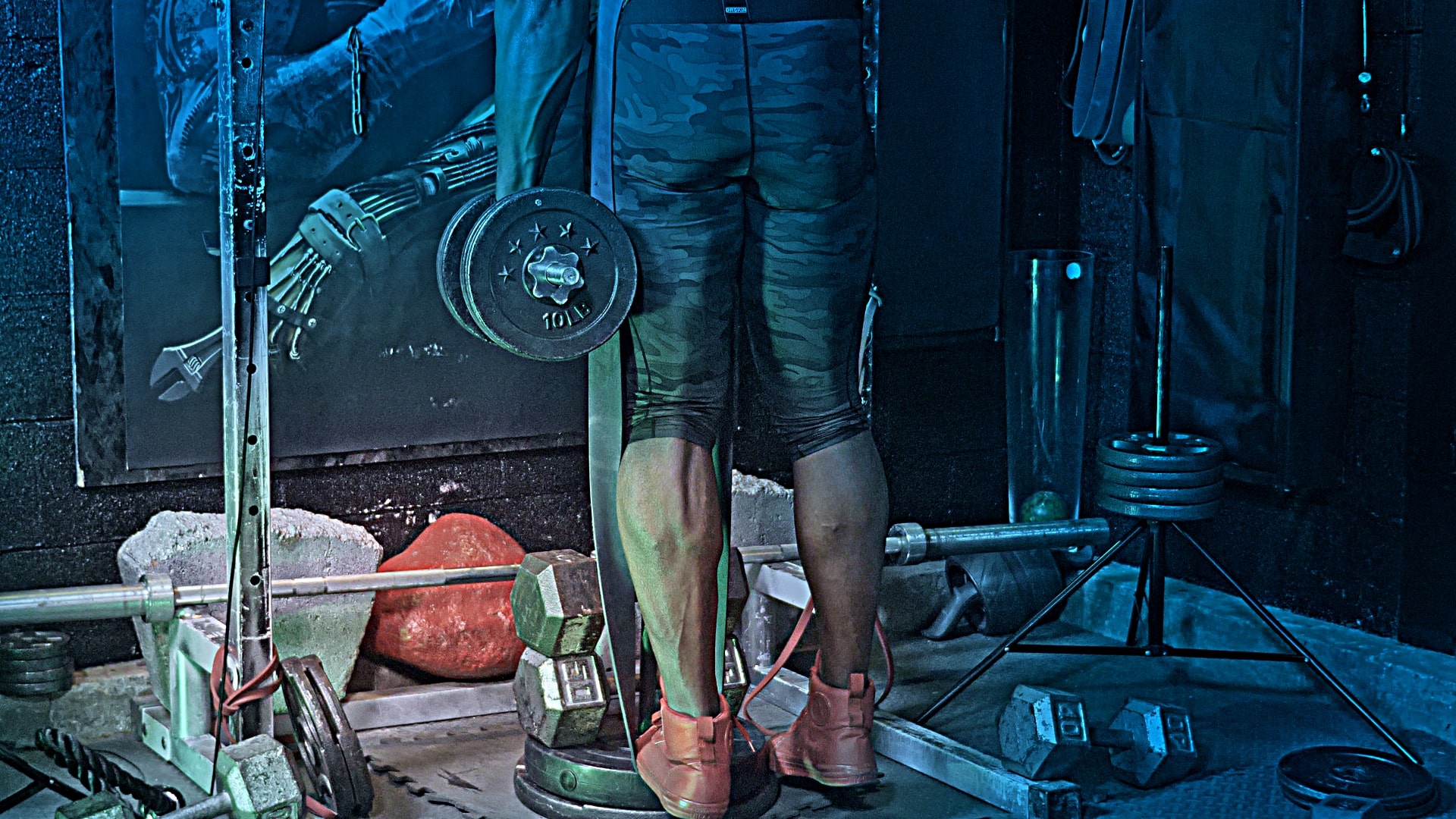 Standing Dumbbell Calf Raise with Resistance Band - Start Position
Standing Dumbbell Calf Raise with Resistance Band - Start Position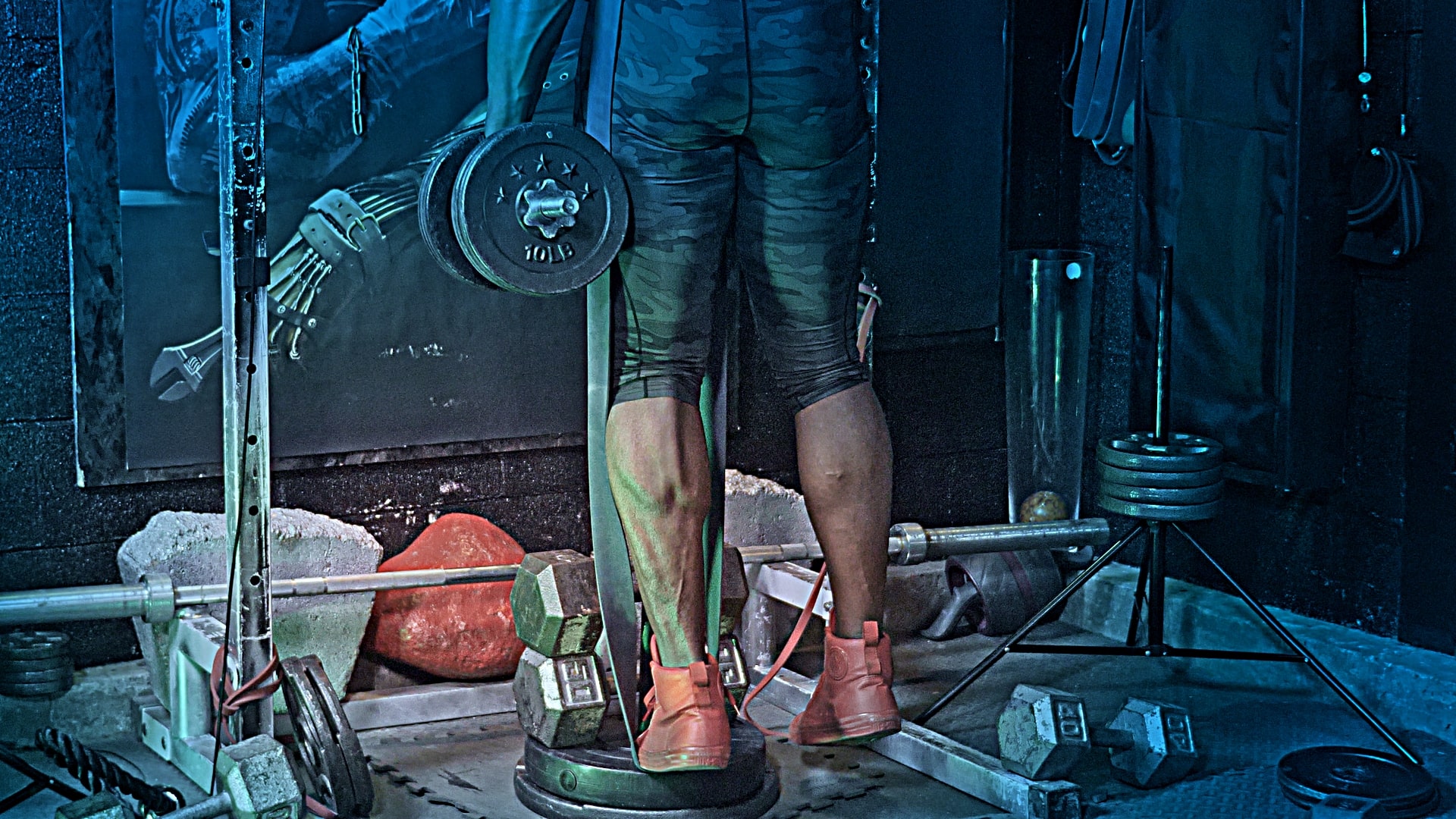 Calf Raise with Dumbbell Variation 5: Standing Dumbbell Calf Raise with Resistance Band - End Position
Calf Raise with Dumbbell Variation 5: Standing Dumbbell Calf Raise with Resistance Band - End PositionA Standing Calf Raise With dumbbells is great, but adding in a heavy resistance band into the mix and now you’ve turned the movement up two notches.
Items Needed: Heavy dumbbell, heavy resistance band, and a doorstep or block. Make sure that your block is sturdy and won’t tip over by placing a heavy weight on it.
Cue 1: Put the band under the ball of your working foot and over the opposite shoulder, and have the dumbbell on the working side. Hold inside a door frame or rack for support. Place the ball of your foot on the edge of the block or step.
Cue 2: Rise as high on your toes as possible and hold for two seconds before slowly lowering your heel past the level of the step until you feel a deep stretch. Make sure to keep the band under the ball of your feet to keep it secure.
How Many Reps Should I do For Calf Raises If I Want To Build Muscle?
There’s the argument and proof that as long as you train a muscle to failure, you can build muscle using 5-30 reps per set. Calf Raise with dumbbells work equally well using high or low reps.
On one hand, you may want to focus on slow repetitions of 15-30 during your Standing Dumbbell Calf Raises if you don’t have access to super heavy dumbbells. On the flip side, as calves are naturally used to walking, running, and volume, doing high weight and low repetitions will also gleam results.
I would definitely mix and match repetitions throughout the workout week by having a few sessions where I concentrate exclusively on low repetition /high weight work and also a few times per week where my calf raise with dumbbell objective would be high repetitions in the 15-30 rep range.
While you're building your calves with these calf raise with dumbbell variations, set about building your hamstrings with the top 15 best dumbbell hamstring exercises, or go one step further and stride your way through these killer dumbbell quad exercises.
Building Your Calves Is One Piece Of The Physique Puzzle -
1: Are You Tired of Disappearing When You Turn To The Side & Rear? Focus On This Rear Delt Workout or Take Advantage of These Rear Delt Fly Variations.
2: Need a Better Back? Work Your Way Through These Chest Supported Row Variations
3: This Dumbbell Chest and Tricep Workout Will Test Every Muscle Fiber - Will You Be Able To Complete It??
db Skull Crushers: Get Big Results With These 2 Variations!
Mission Jacked L.L.C
Address: 9407 NE Vancouver Mall Dr
STE 104 #1269
Vancouver, WA 98662 USA
Email: mission@missionjacked.com
